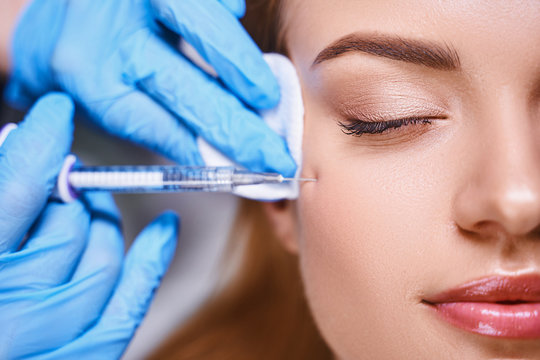Botox injection in riyadh, while generally considered safe and effective when administered by a qualified professional, do carry potential side effects and risks. Understanding these is crucial for anyone considering the treatment in Riyadh or anywhere else. Most side effects are mild and temporary, but being aware of both common and rare complications helps in making an informed decision and knowing when to seek medical attention.

Common and Mild Side Effects (Usually Temporary)
These are the most frequently reported side effects and typically resolve within a few hours to a few days after the injection:
- Pain, Swelling, Redness, or Bruising at the Injection Site: This is the most common side effect. The needle can cause minor trauma to the skin and tiny blood vessels, leading to these localized reactions. Bruising, if it occurs, can last up to a week.
- Headache: Some individuals report a mild headache after Botox injections, which usually subsides within 24-48 hours. Over-the-counter pain relievers like Tylenol (Acetaminophen) can help manage this.
- Flu-like Symptoms: A small number of patients might experience general malaise, fatigue, or flu-like symptoms, particularly after their first treatment.
- Nausea or Upset Stomach: Less common, but some individuals may experience mild digestive upset.
- Temporary Numbness (Sensory): While Botox doesn't directly cause a loss of sensation, some people might describe a feeling of "numbness" in the treated area due to the inability to move the muscle. This is not a true sensory numbness but rather a lack of muscle activity.
Less Common or Specific Side Effects (Often Related to Injection Technique or Area)
These side effects are less common and often depend on the specific area treated or the precision of the injection:
- Temporary Drooping Eyelids (Ptosis) or Eyebrows: This is a well-known, though uncommon, side effect. It occurs if the Botox spreads to nearby muscles that control eyelid or eyebrow elevation. It typically resolves as the Botox wears off, which can take several weeks to months. An experienced injector minimizes this risk by using precise injection points and appropriate dosages.
- Asymmetry: If Botox is not distributed evenly, it can lead to temporary facial asymmetry, where one side of the face appears different from the other (e.g., one eyebrow higher than the other). This usually corrects itself as the Botox wears off or can sometimes be adjusted with a small touch-up.
- Dry Eye or Excessive Tearing: If Botox affects the muscles around the eye or tear ducts, it can temporarily alter tear production.
- "Spock" Eyebrow or "Mephisto" Brow: This refers to an overly arched or pointed eyebrow, which can happen if the central forehead muscles are relaxed too much while the outer muscles remain active. An experienced doctor can correct this with a small additional injection.
- Difficulty Swallowing or Speaking: This is a rare but more serious side effect that can occur if Botox spreads to muscles in the neck or throat, particularly if large doses are used or if the neck area is treated.
- Muscle Weakness in Untreated Areas: In very rare instances, the toxin can spread beyond the intended injection site, leading to generalized muscle weakness. The Saudi Food and Drug Authority (SFDA) and other health organizations have issued warnings about the possibility of "distant spread of toxin effect," which can cause symptoms consistent with botulism, though this is extremely rare with cosmetic doses.
- Allergic Reactions: While rare, allergic reactions to Botox or its components are possible. Symptoms can range from mild (itching, rash, hives) to severe (wheezing, asthma, dizziness, faintness, difficulty breathing – anaphylaxis). Patients should inform their doctor of any known allergies prior to treatment.
Who Should Avoid Botox?
Botox injections are generally not recommended for:
- Pregnant or breastfeeding women.
- Individuals with certain neurological disorders or muscle conditions (e.g., Myasthenia Gravis, Lambert-Eaton Syndrome, ALS/Lou Gehrig's Disease) as Botox can exacerbate muscle weakness.
- Those with a skin infection or inflammation at the proposed injection site.
- Individuals with known allergies to any of the ingredients in Botox or other botulinum toxin products.
Minimizing Risks and Ensuring Safety in Riyadh
To minimize the risk of side effects, it is paramount to:
- Choose a Qualified Practitioner: In Riyadh, always seek a board-certified dermatologist or plastic surgeon who has extensive experience with Botox injections. Their knowledge of facial anatomy and proper injection techniques is crucial for safety and optimal results.
- Follow Aftercare Instructions: Your clinic in Riyadh will provide specific aftercare guidelines. These typically include:
- Avoiding rubbing or massaging the treated area for at least 24 hours to prevent Botox spread.
- Staying upright (not lying down) for 3-4 hours post-injection.
- Avoiding strenuous exercise, saunas, and hot tubs for at least 24-48 hours to minimize bruising and swelling.
- Avoiding alcohol and blood-thinning medications (like aspirin, ibuprofen) before and immediately after treatment.
- Report Any Concerns: If you experience any severe or unusual side effects (e.g., blurred vision, trouble swallowing, severe muscle weakness, shortness of breath), contact your healthcare provider immediately.
By choosing a reputable clinic and an expert doctor in Riyadh, and by adhering to all pre- and post-treatment instructions, you can significantly reduce the likelihood of experiencing adverse side effects and ensure a safe and successful Botox treatment experience.




Comments